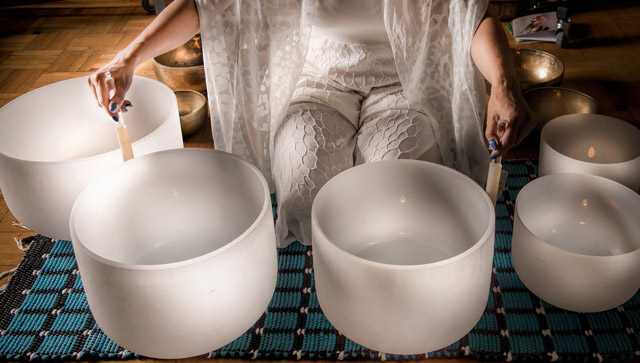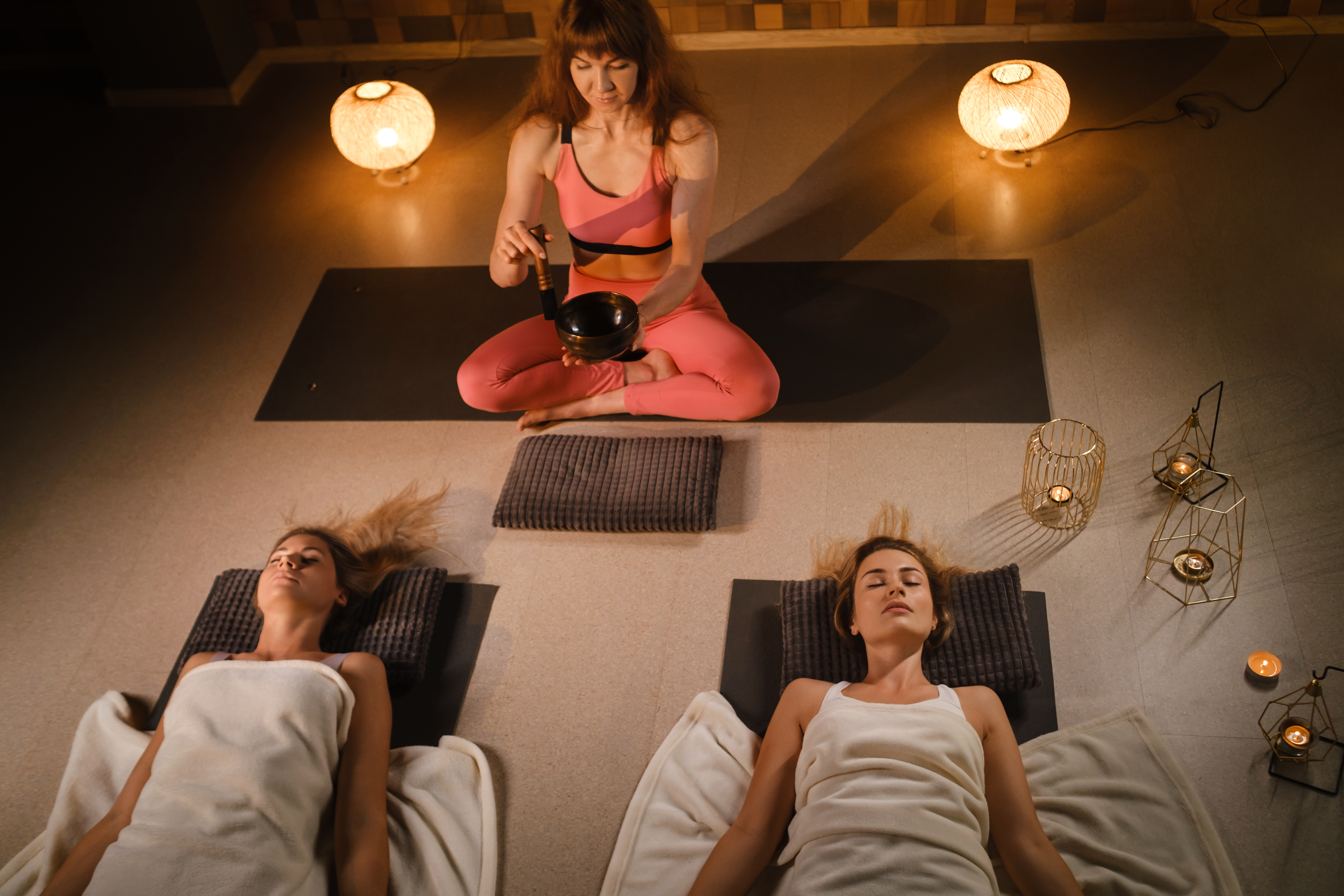The Harmonious Echo: A Deep Dive into Sound Bath Healing
“Music gives a soul to the universe, wings to the mind, flight to the imagination and life to everything.” – Plato
In light of Plato’s profound insight, it’s no wonder that humanity has been inextricably connected to sound throughout history. Our ancestors recognized the power of music and sound to heal, to connect, and to elevate the spirit. Building upon this ancient knowledge, sound baths have emerged in our modern world as a sanctuary of healing and rejuvenation.
The therapeutic allure of sound is as old as the winds, the rustling of leaves, and the harmonious chorus of nature. Sound bath, an ancient practice, is now making a harmonious resurgence. From its origins to its numerous benefits, this article will take you on an auditory journey of discovery.
History and Origin of Sound Bath The origins of sound baths can be traced back to ancient cultures, including those of Tibet, India, and Greece. The Tibetan Singing Bowls, Indian Bells, and the Greek Kyma were early tools of sound therapy. They believed that sound had the power to heal, purify, and elevate the human spirit.
The famous Greek philosopher Pythagoras, known for his mathematical theorem, was also an advocate for sound healing. He purportedly said, “There is geometry in the humming of the strings. There is music in the spacing of the spheres.”
Benefits of Sound Bath Healing
- Mental Well-being: In our fast-paced world, anxiety, stress, and mental fatigue are commonplace. Sound baths offer a sanctuary for the mind. They provide relaxation, and research suggests they can significantly reduce stress and anxiety.
- Physical Relaxation: The vibrational frequencies resonate with the body, leading to a relaxed state. This can assist in pain relief, improved sleep, and even reduced blood pressure.
- Spiritual Connection: Sound baths can also be a spiritual journey for many. They’re known to enhance meditation, aiding in deeper introspection and personal growth.
Who Should Experience a Sound Bath? Practically anyone can benefit from a sound bath. Whether you’re grappling with mental stress, seeking a deeper meditation experience, or just curious about alternative therapies, a sound bath can offer something unique.
How to Practice Sound Bath Healing? Sound bath healing can be practiced in various settings:
- Sound Bath Studios: Many cities now have studios dedicated to sound bath experiences. Led by trained facilitators, these sessions often include a combination of gongs, singing bowls, and bells.
- At Home: With the plethora of online resources available, one can easily begin a sound bath journey at home. Purchase a quality singing bowl or tuning fork, find a quiet spot, and let the frequencies guide you.
- At the Office: A mini sound bath session during breaks can rejuvenate the mind. Desk-sized instruments or sound bath apps can facilitate this.
Can It Be Practiced Anywhere? Yes! The beauty of sound bath healing is its adaptability. From a dedicated space at home to a quiet corner in the office or a serene spot in nature, sound baths can be experienced anywhere.
Sound Bath Statistics:
- Rising Popularity: A 2020 survey highlighted that about 40% of urban adults had either attended or were interested in attending a sound bath session.
- Mental Health Impact: 70% of those who’ve participated in sound bath sessions reported significant reductions in anxiety and stress levels.
- Increased Accessibility: From 2019 to 2022, the number of sound bath studios in major cities tripled, reflecting its growing appeal.
Famous Quotes on Sound Healing: Apart from Pythagoras, many great thinkers and artists have acknowledged the power of sound. Beethoven once said, “Music can change the world.” Rumi, a 13th-century Persian poet, mused, “There is a voice that doesn’t use words. Listen.”
The Instruments Behind Sound Bath
While the singing bowls of Tibet are the most recognized instruments, there are several others employed in sound bath therapy:
- Crystal Singing Bowls: Made from quartz crystal, these bowls produce resonant tones that are not just heard but also felt throughout the body.
- Gongs: With origins from East and Southeast Asia, gongs produce deep, reverberating sounds, promoting deep relaxation.
- Didgeridoo: An indigenous Australian wind instrument, the didgeridoo’s droning sound is believed to heal and open energy pathways.
- Tuning Forks: Often used in sound healing for their precise vibrations, they can be applied to specific parts of the body, channeling vibration directly into the area.
- Voice: The human voice, through chants, mantras, and overtone singing, can be as therapeutic as any instrument. In many cultures, vocal toning and chanting have been employed for spiritual connection and healing.
The Science Behind Sound Bath Healing
Modern science has begun to demystify the benefits of sound bath therapy:
- Brainwave Entrainment: This refers to the brain’s natural tendency to synchronize with dominant frequencies. In a sound bath, the consistent tones can lead the brain from a beta state (normal consciousness) to a theta state (relaxed consciousness) or even a delta state, where internal healing is believed to occur.
- Parasympathetic Nervous System Activation: The body’s rest-and-digest response is activated, leading to lower blood pressure, reduced stress hormone levels, and relaxation.
- Resonance: Every organ and cell in the human body has a natural frequency. The vibrations from sound bath instruments can resonate with these, potentially bringing them into alignment and balance.
Exploring Sound Bath Further
- Self-practice vs. Group Sessions: While personal sessions can be intimate and focused, group sessions offer collective energy. The resonance in a room full of people can amplify the experience.
- Duration: Typical sessions can range from 20 minutes to several hours. Beginners are often advised to start short and gradually extend as they become more comfortable.
- Environment: It’s not just about the sound but also the space. Opt for dim lighting, perhaps some essential oil diffusers, and a comfortable place to lie down.
- Integration: Post a sound bath, take some time to integrate the experience. This can be through journaling, meditation, or simply resting.
Continuing Education and Training
For those deeply interested, there are institutions and experienced practitioners offering courses in sound bath healing. These range from introductory workshops to extended courses that can lead to certification.
The ancient practice of sound bath therapy, now buoyed by modern science and a renewed global interest in holistic well-being, serves as a testament to the eternal power of sound. As the renowned Hazrat Inayat Khan once put it, “The knower of the mystery of sound knows the mystery of the whole universe.” With its multi-faceted benefits and deep roots in human history, the sound bath experience is a resonant reminder of our intrinsic connection to the universe and its harmonies.

